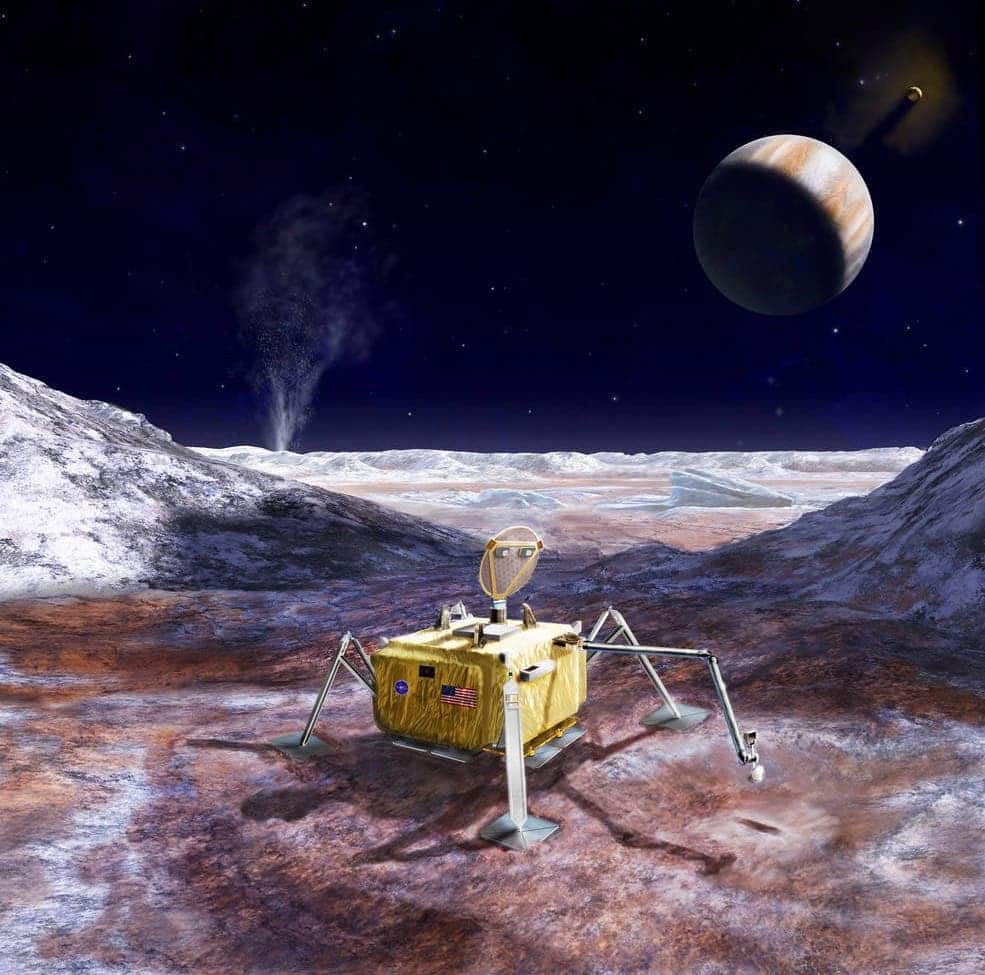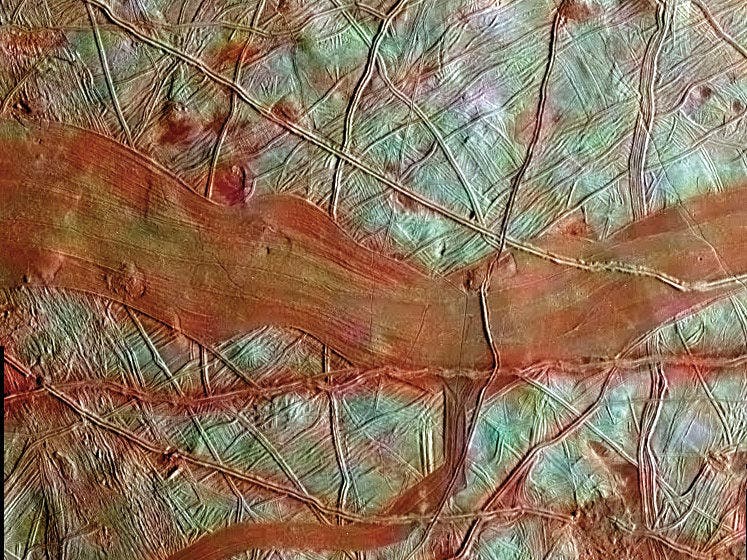NASA just revealed comprehensive plans to search for life on Europa. The space agency intends to send a stationary lander which will include three different instrument suites which will collect samples and analyze them, looking for native life forms.

Artist’s illustration of NASA’s possible Europa lander on the surface of the icy Jovian moon.
Credit: NASA/JPL-Caltech
If we want to look for extraterrestrial life, Europa might be one of the best guesses in the solar system. An icy satellite doesn’t seem like a likely candidate, but astronomers are fairly certain it is. After finding convincing evidence of water plumes on Jupiter’s moon, it seems quite likely that Europa has Earth-like oceans beneath its frozen surface. These oceans might very well foster life, which is why NASA is quite eager to send a probe onto its surface.
While the lander mission still hasn’t been detailed yet, Congress wants it to happen — so NASA will likely make it happen. The report is also preliminary, which means that many things from it might still change, but it’s a clear show of intent: if everything goes according to plan, we’ll be soon searching for Europa’s life forms.
Viking, Mars, and Europa
Mars was a prime candidate for extraterrestrial life, and there may well be life on Mars, but we’ve learned quite a few things in the past decades. The Viking landers searched for life on Mars in the 1970s, sending back results that are still debated to this day. Two instruments failed to send conclusive evidence, but one did provide some tantalizing information, indicating the presence of organic molecules. But if there’s one thing we learned from the Viking missions, is that you can’t just bump in and out and hope to sort things out.
“What Viking taught is us that you don’t just jump in and look for life,” says Curt Niebur, program scientist on the Europa lander mission, as well as the Europa Clipper, which will fly by the frozen moon in the 2020s. “You need a general understanding of the environment in which you’re looking, because it can complicate things.”

This close-up of Europa, taken by the Galileo spacecraft in 1997, has been color-enhanced to reveal surface features. Blue-white terrain shows relatively pure water ice; reddish stripes may contain salts from an ocean, and hence would be a good target location for a lander. Credit: NASA/JPL-Caltech/SETI Institute
Things get even trickier on Europa. There’s very little chance that life survives on its surface, so you need to touch down and take samples from beneath the surface. Thus, NASA wants to equip three instrument suites, featuring an “organic compositional analyzer,” a microscope system and a “vibrational spectrometer.” The research suite is tailor made to identify extremophiles — microscopic creatures which survive in extreme environments.
“The science return possible from the model payload is such that, if life is present in Europa’s ice at a level comparable to one of the most extreme and desolate of environments on Earth (Lake Vostok ice), then this mission could detect life in Europa’s icy surface,” the report’s authors wrote. (Lake Vostok lies beneath the surface of the East Antarctic Ice Sheet.)
Aside from looking for life, the mission would also characterize Europa’s surface and its subsurface habitability. Even if it isn’t inhabited, it could be habitable. Who knows, at some point in the future, Europa might become Earth’s fishery.









